 |
|||||||||




 |
|||||||||




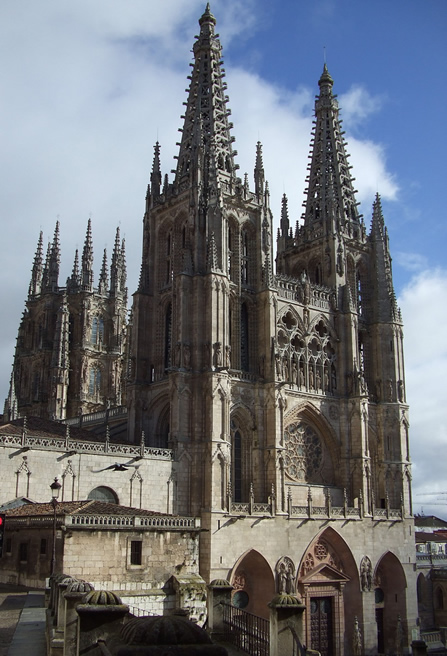
Photo: Burgos Cathedral, Spain (UNESCO World Heritage Site). The Cathedral of Burgos was begun in the 13th century at the same time as the great cathedrals of the Ile-de-France and was completed in the 15th and 16th centuries. The entire history of Gothic art is summed up in its superb architecture and its unique collection of works of art, including paintings, choir stalls, reredos, tombs and stained-glass windows. Photo Credit: Lumiago.
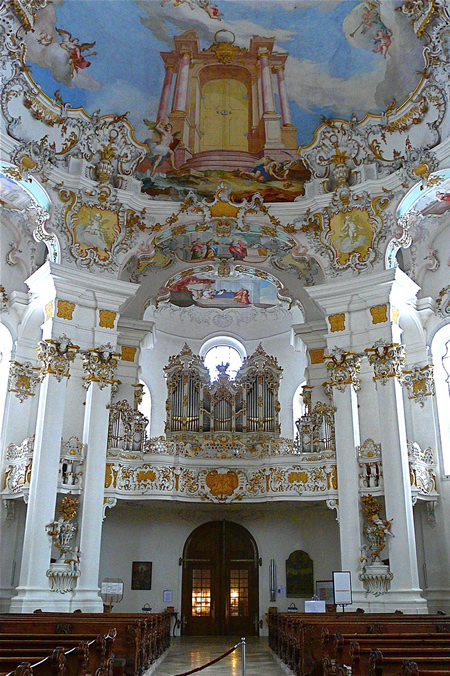
Photo: Pilgrimage Church of Wies, Germany (UNESCO World Heritage Site). Miraculously preserved in the beautiful setting of an Alpine valley, the Church of Wies (1745-54), the work of architect Dominikus Zimmermann, is a masterpiece of Bavarian Rococo. Photo Credit: Rita Willaert.
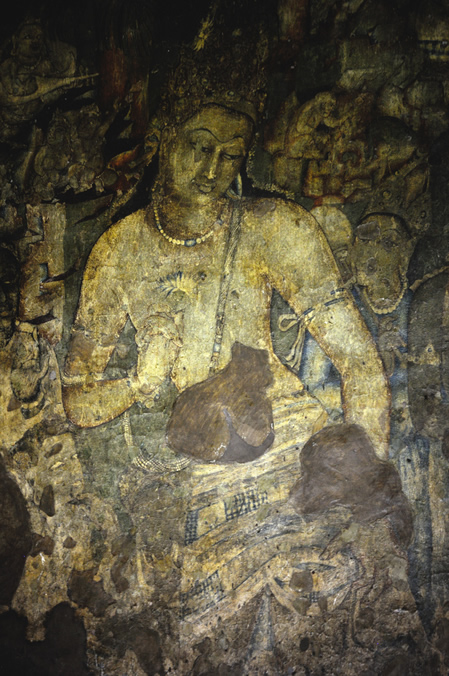
Photo: The Ajanta Caves in Aurangabad district of Maharashtra, India (UNESCO World Heritage Site), are about 30 rock-cut Buddhist cave monuments which date from the 2nd century BCE to about 480 or 650 CE. The caves include paintings and sculptures described by the government Archaeological Survey of India as “the finest surviving examples of Indian art, particularly painting”, which are masterpieces of Buddhist religious art, with figures of the Buddha and depictions of the Jataka tales. The caves were built in two phases starting around the 2nd century BCE, with the second group of caves built around 400-650 CE according to older accounts, or all in a brief period between 460 to 480 according to the recent proposals of Walter M. Spink. The site is a protected monument in the care of the Archaeological Survey of India, and since 1983, the Ajanta Caves have been a UNESCO World Heritage Site. Photo Credit: Amit Rawat.
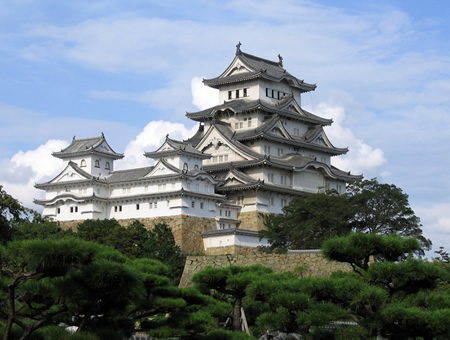
Photo: A view of Himeji-jo from the West Bailey, Japan (UNESCO World Heritage Site). Himeji-jo is perhaps the most well known castle in Japan. It has remained in its current condition for almost 400 years. Unlike other Japanese castles, this one has not been damaged by warfare—and that includes WWII. The “White Heron” castle was originally constructed in 1333, but later improved by Toyotomi Hideyoshi and later by Terumasa Ikeda, a son-in-law of Tokugawa Ieyasu. Photo Credit: Jpellgen.
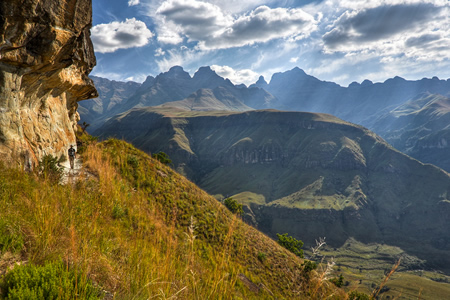
Photo: Maloti Drakensberg Tranboundary, South Africa (UNESCO World Heritage Site). Cathedral Peak area trail Ukhahlamba Drakensberg National Park South Africa. Photo Credit: Jono Hey.
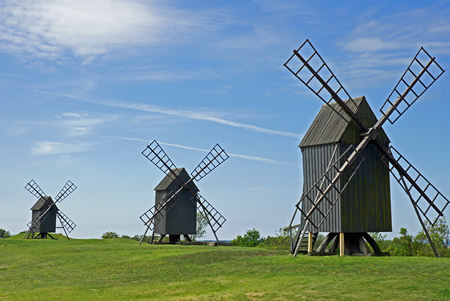
Photo: Agricultural Landscape of Southern Oland, Sweden (UNESCO World Heritage Site). The southern part of the island of Oland in the Baltic Sea is dominated by a vast limestone plateau. Human beings have lived here for some five thousand years and adapted their way of life to the physical constraints of the island. As a consequence, the landscape is unique, with abundant evidence of continuous human settlement from prehistoric times to the present day. Photo Credit: Allie Caulfield.
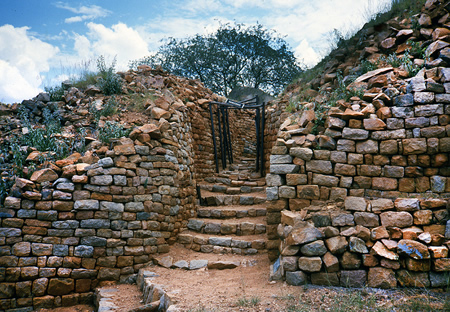
Photo: Khami ruins, Zimbabwe (UNESCO World Heritage Site). Khami, which developed after the capital of Great Zimbabwe had been abandoned in the mid-16th century, is of great archaeological interest. The discovery of objects from Europe and China shows that Khami was a major centre for trade over a long period of time. Photo Credit: Lars Lundqvist.
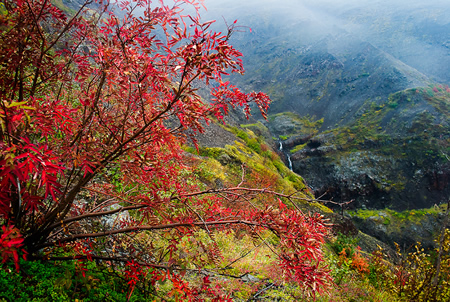
Photo: Putorana Plateau, Russian Federation (UNESCO World Heritage Site). This site coincides with the area of the Putoransky State Nature Reserve, and is located in the central part of the Putorana Plateau in northern Central Siberia. It is situated about 100 km north of the Arctic Circle. The part of the plateau inscribed on the World Heritage List harbours a complete set of subarctic and arctic ecosystems in an isolated mountain range, including pristine taiga, forest tundra, tundra and arctic desert systems, as well as untouched cold-water lake and river systems. A major reindeer migration route crosses the property, which represents an exceptional, large-scale and increasingly rare natural phenomenon. Photo Credit: Filipp Solovev.
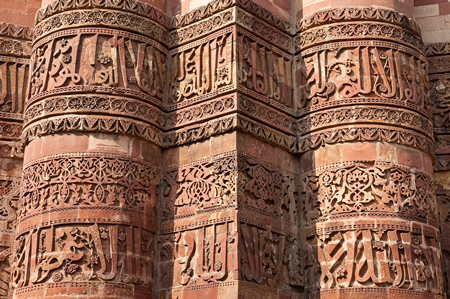
Photo: Detail of Qutb Minar (UNESCO World Heritage Site). Qutb Minar and its Monuments, Delhi. Built in the early 13th century a few kilometres south of Delhi, the red sandstone tower of Qutb Minar is 72.5 m high, tapering from 2.75 m in diameter at its peak to 14.32 m at its base, and alternating angular and rounded flutings. The surrounding archaeological area contains funerary buildings, notably the magnificent Alai-Darwaza Gate, the masterpiece of Indo-Muslim art (built in 1311), and two mosques, including the Quwwat-ul-Islam Mosque, the oldest in northern India. Photo Credit: Chaostrophy.
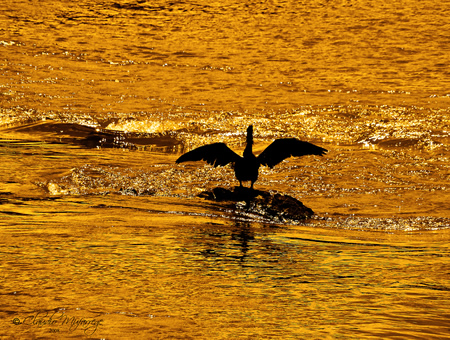
Photo: Iguacu National Park, Brazil (UNESCO World Heritage Site). The park shares with Iguazu National Park in Argentina one of the world’s largest and most impressive waterfalls, extending over some 2,700 m. It is home to many rare and endangered species of flora and fauna, among them the giant otter and the giant anteater. The clouds of spray produced by the waterfall are conducive to the growth of lush vegetation. Photo Credit: Claudio Alejandro Mufarrege.
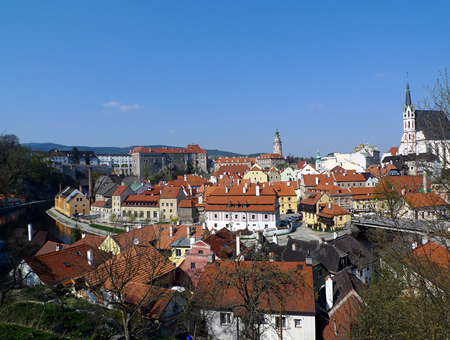
Photo: Historic Centre of Cesky Krumlov, Czech Republic (UNESCO World Heritage Site). Situated on the banks of the Vltava river, the town was built around a 13th-century castle with Gothic, Renaissance and Baroque elements. It is an outstanding example of a small central European medieval town whose architectural heritage has remained intact thanks to its peaceful evolution over more than five centuries. Photo Credit: Matthias Ripp.
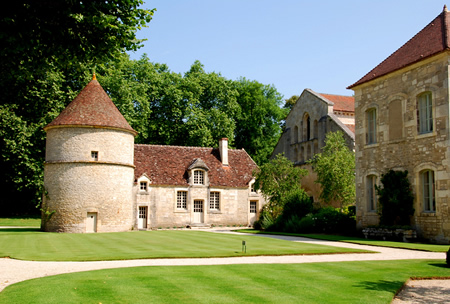
Photo: Cistercian Abbey of Fontenay, Burgundy Region, France (UNESCO World Heritage Site). This stark Burgundian monastery was founded by St Bernard in 1119. With its church, cloister, refectory, sleeping quarters, bakery and ironworks, it is an excellent illustration of the ideal of self-sufficiency as practised by the earliest communities of Cistercian monks. Photo Credit: Jim Forest.
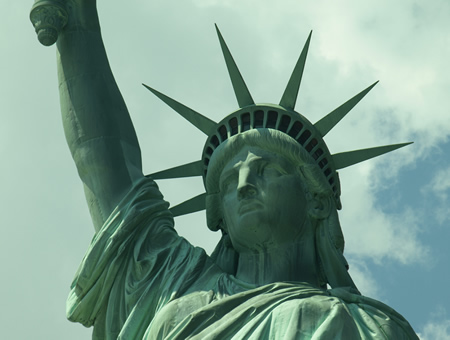
Photo: The Statue of Liberty, USA (UNESCO World Heritage Site). The Statue of Liberty is a colossal neoclassical sculpture on Liberty Island in the middle of New York Harbor, in Manhattan, New York City. The statue, designed by Frederic Auguste Bartholdi and dedicated on October 28, 1886, was a gift to the United States from the people of France on the centenary of American independence. The statue is of a robed female figure representing Libertas, the Roman goddess of freedom. Photo Credit: A Herrero.
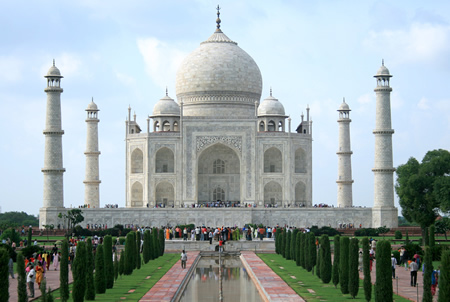
Photo: Taj Mahal, Agra, Uttar Pradesh, India (UNESCO World Heritage Site). An immense mausoleum of white marble, built in Agra between 1631 and 1648 by order of the Mughal emperor Shah Jahan in memory of his favourite wife, the Taj Mahal is the jewel of Muslim art in India and one of the universally admired masterpieces of the world’s heritage. Photo Credit: Michael Baun.

Photo: Everglades National Park, Florida, USA (UNESCO World Heritage Site). This site at the southern tip of Florida has been called ‘a river of grass flowing imperceptibly from the hinterland into the sea’. Photo Credit: Stig Nygaard.
• During the 37th session of the UNESCO World Heritage Committee, which is being held until 27 June 2013, in Phnom Penh and Siem Reap (Cambodia), 19 new sites have been added to the UNESCO World Heritage List. This brings the List to a total of 981 properties being divided into 759 cultural, 193 natural and 29 mixed properties, in 160 States Parties.
The latest inscriptions are:
• Bergpark Wilhelmshöhe (Germany). Descending a long hill dominated by a giant statue of Hercules, the monumental water displays of Wilhelmshöhe were begun by Landgrave Carl of Hesse-Kassel in 1689 around an east-west axis and were developed further into the 19th century. Reservoirs and channels behind the Hercules Monument supply water to a complex system of hydro-pneumatic devices that supply the site’s large Baroque water theatre, grotto, fountains and 350 meter long Grand Cascade. Beyond this, channels and waterways wind across the axis, feeding a series of dramatic waterfalls and wild rapids, the geyser-like Grand Fountain which leaps 50m high, the lake and secluded ponds that enliven the Romantic garden created in the 18th century by Carl’s great-grandson, Elector Wilhelm I. The great size of the park and its waterworks along with the towering Hercules statue constitute an expression of the ideals of absolutist Monarchy while the ensemble is a remarkable testimony to the aesthetics of the Baroque and Romantic periods.
• Medici Villas and Gardens in Tuscany (Italy). Twelve villas and two pleasure gardens spread across the Tuscan country side make up this site which bears testimony to the influence the Medici family exerted over modern European culture through its patronage of the arts. Built between the 15th and 17th centuries, they represent an innovative system of rural construction in harmony with nature and dedicated to leisure, the arts and knowledge. The villas embody an innovative form and function, a new type of princely residence that differed from both the farms owned by rich Florentines of the period and from the military might of baronial castles. The Medici villas form the first example of the connection between habitat, gardens, and the environment and became an enduring reference for princely residences throughout Italy and Europe. Their gardens and integration into the natural environment helped develop the appreciation of landscape characteristic Humanism and the Renaissance.
• Bochnia Royal Salt Mines (Poland) is an extension to the Polish Wieliczka Salt Mine, inscribed on the World Heritage List in 1978, which is now to be known as the Wieliczka and Bochnia Royal Salt Mines. The Wieliczka Saltworks Castle used for the management of the property was also added to the site. The rock salt deposit in Wieliczka-Bochnia has been mined since the 13th century and is the oldest of its type in Europe. Spread over several levels, it has 300 km of galleries with underground chapels, storerooms and more. It includes altars and statues sculpted in the salt, making a fascinating pilgrimage into the past of a major industrial undertaking that developed over 700 years.
• Hill Forts of Rajasthan (India). The serial site, situated in the state of Rajastahan, includes six majestic forts in Chittorgarh; Kumbhalgarh; Sawai Madhopur; Jhalawar; Jaipur, and Jaisalmer. The ecclectic architecture of the forts, some up to 20 kilometres in circumference, bears testimony to the power of the Rajput princely states that flourished in the region from the 8th to the 18th centuries. Enclosed within defensive walls are major urban centres, palaces, trading centres and other buildings including temples that often predate the fortifications within which developed an elaborate courtly culture that supported learning, music and the arts. Some of the urban centres enclosed in the fortifications have survived, as have many of the site’s temples and other sacred buildings. The forts use the natural defenses offered by the landscape: hills, deserts, rivers, and dense forests. They also feature extensive water harvesting structures, largely still in use today.
Five natural sites were inscribed:
• Xinjiang Tianshan (China)
• Mount Etna (Italy)
• El Pinacate and Gran Desierto de Altar Biosphere Reserve (Mexico)
• Namib Sand Sea (Namibia)
• Tajik National Park (Tajikistan)
Fourteen cultural sites were inscribed:
• Red Bay Basque Whaling Station (Canada)
• Cultural Landscape of Honghe Hani Rice Terraces, (China)
• Historic Monuments and Sites in Kaesong (Democratic People’s Reublic of Korea)
• Levuka Historical Port Town (Fiji)
• Bergpark Wilhelmshöhe (Germany)
• Hill Forts of Rajashtan (India)
• Golestan Palace (Iran)
• Medici Villas and Gardens in Tuscany (Italy)
• Fujisan, sacred place and source of artistic inspiration (Japan)
• Historic Centre of Agadez (Niger)
• Wooden Tserkvas of the Carpathian Region in Poland and Ukraine (Poland / Ukraine)
• University of Coimbra - Alta and Sofia (Portugal)
• Al Zubarah Archaeological Site (Qatar)
• Ancient City of Tauric Chersonese and its Chora (Ukraine)
Three sites received extensions:
• Mount Kenya-Lewa Wildlife Conservancy (Kenya)
• Maloti Drakensberg Transboundary World Heritage Site (Lesotho / South Africa)
• Wieliczka and Bochnia Royal Salt Mines (Poland)
|GlobalGiants.Com|
Edited & Posted by the Editor | 12:49 PM | View the original post
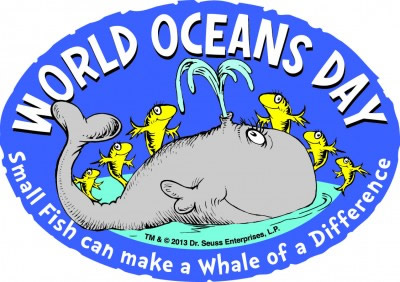
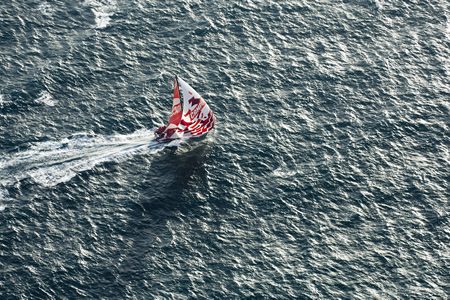
Photo: Volvo Ocean Race. CAMPER with Emirates Team New Zealand. On the final leg of their 2000 mile qualifier approach Auckland, New Zealand. Photo © Chris Cameron.
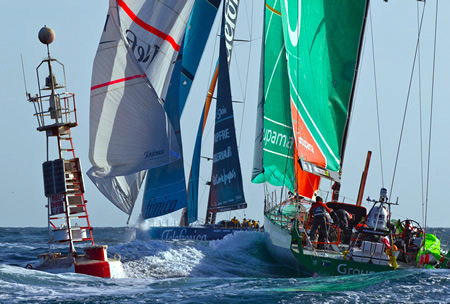
Photo: Volvo Ocean Race. Groupama Sailing Team, skippered by Franck Cammas from France at the finish of leg 2 of the Volvo Ocean Race 2011-12, from Cape town, South Africa, to Abu Dhabi, UAE. (Photo © Ian Roman/Volvo Ocean Race via Getty Images).
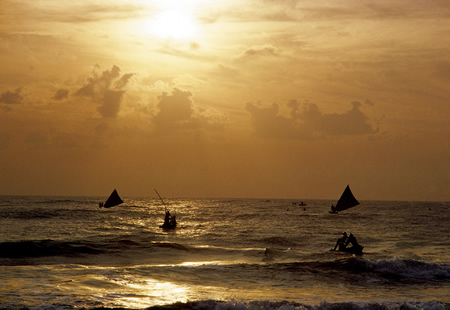
Photo: Bay of Bengal, near Chennai, India. Fishermen sail at dawn in their catamarans, consisting of four or five pieces of balsa wood tied together. Madras, India. UN Photo/John Isaac.
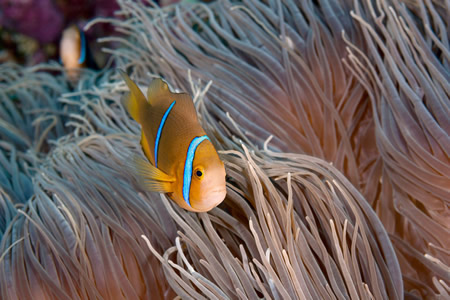
Photo: Orange fin anemone fish wards off predators that might eat the host anemone. Tuamotu, French Polynesia. Photo © Khaled bin Sultan Living Oceans Foundation/Michele Westmorland.
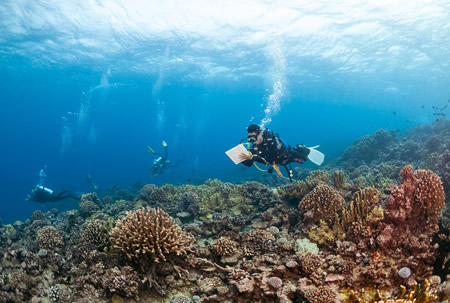
Photo: Khaled bin Sultan Living Oceans Foundation scientist, Badi Samaniego, conducts a reef fish survey in French Polynesia. Photo © Khaled bin Sultan Living Oceans Foundation/Michele Westmorland.
• World Oceans Day was officially recognized by the United Nations in 2008 and is now celebrated on 8 June each year.
The theme for World Oceans Day 2013-2014 is “Together we have the power to protect the ocean!”, which focuses on “getting involved with ocean conservation in our personal lives, within our communities and globally”.
According to United Nations, this day is celebrated to remind people about the shared ocean of the world and their personal connection to the sea. The day is also celebrated to raise awareness about the crucial role the ocean plays in people’s lives and the important ways in which they can help protect it.
|GlobalGiants.Com|
Edited & Posted by the Editor | 5:24 AM | View the original post
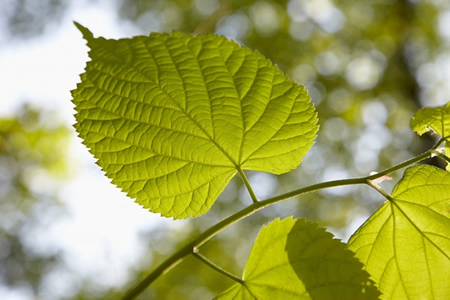
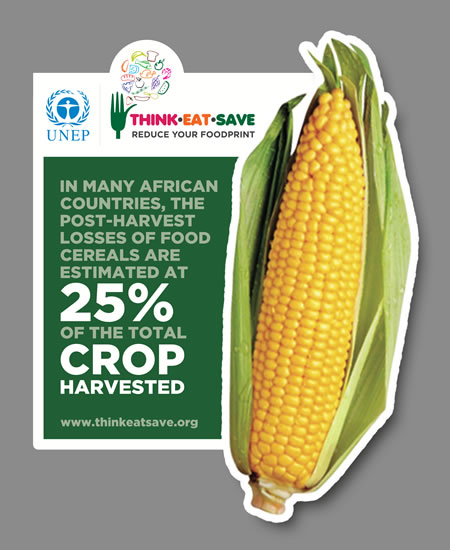
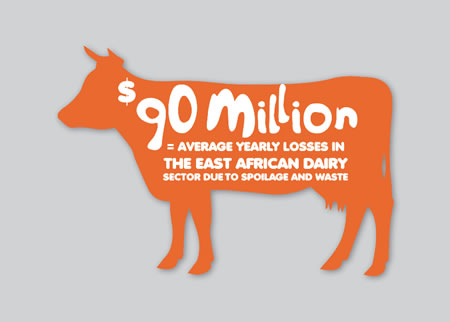
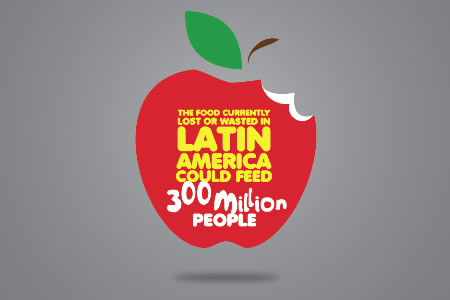
World Environment Day (‘WED’) is celebrated every year on 5 June to raise global awareness of the need to take positive environmental action. It is run by the United Nations Environment Programme (UNEP).
The theme for this year’s World Environment Day celebrations is Think.Eat.Save. Think.Eat.Save is an anti-food waste and food loss campaign.
Think.Eat.Save. aims to accelerate action and provide a global vision for the many and diverse initiatives currently underway around the world.
Worldwide, about one-third of all food produced, worth around US$1 trillion, gets lost or wasted in food production and consumption systems, according to data released by FAO. “Food loss occurs mostly at the production stages - harvesting, processing and distribution - while food waste typically takes place at the retailer and consumer end of the food-supply chain.”
“In a world of seven billion people, set to grow to nine billion by 2050, wasting food makes no sense - economically, environmentally and ethically,” said UN Under-Secretary-General and UNEP Executive Director Achim Steiner.
“Aside from the cost implications, all the land, water, fertilizers and labour needed to grow that food is wasted - not to mention the generation of greenhouse gas emissions produced by food decomposing on landfill and the transport of food that is ultimately thrown away,” he added. “To bring about the vision of a truly sustainable world, we need a transformation in the way we produce and consume our natural resources.”
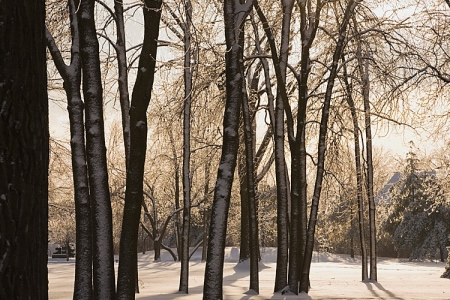
|GlobalGiants.Com|
Edited & Posted by the Editor | 11:01 AM | View the original post

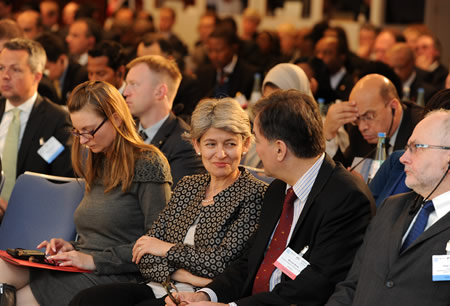
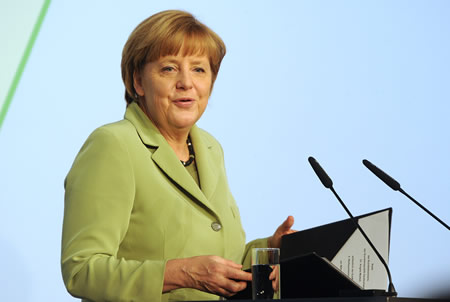
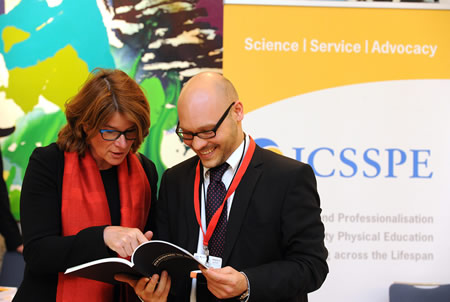
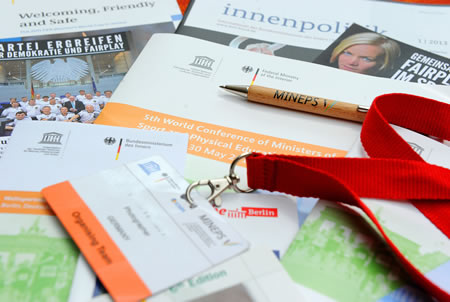
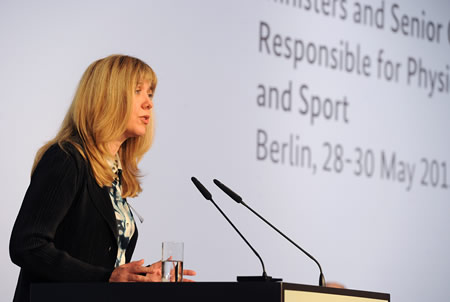
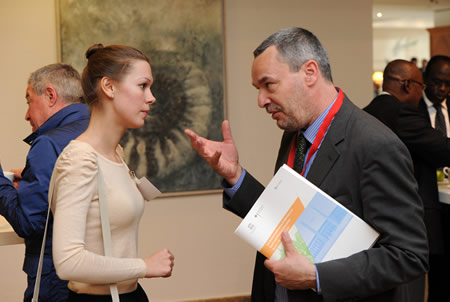
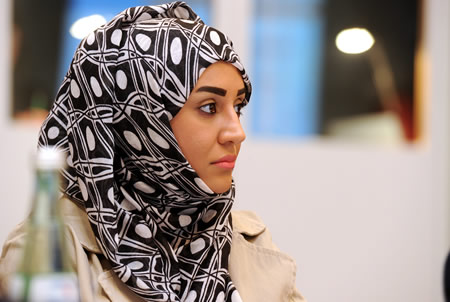
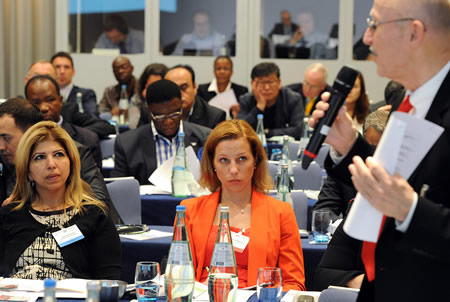
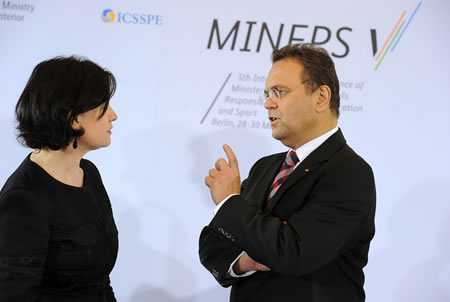
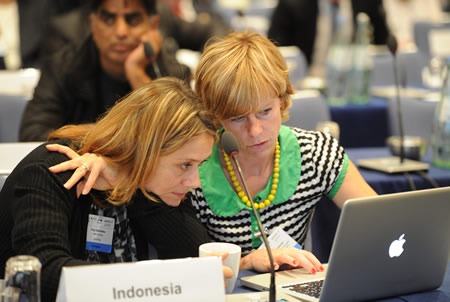
Photos from the Conference (MINEPS V). All photos Copyright © Federal Ministry of the Interior, Germany/Peter Himsel.
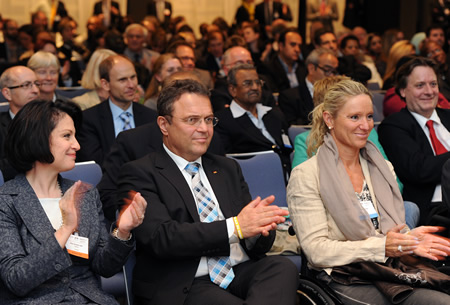
Photo: MINEPS V Welcome Evening: Hans-Peter Friedrich, Federal Minister of the Interior, Germany, at the screening of the film “Gold”, next to Pila Alvarez Laso (UNESCO Assistant Director-General) on the left, and Kirsten Bruhn (athlete and actress of the film “Gold”) on the right. Copyright © Federal Ministry of the Interior, Germany/Peter Himsel.
• The fifth UNESCO World Sport Ministers Conference (MINEPS V) was held in Berlin from 28 to 30 May 2013. It was organized by the German Federal Ministry of the Interior in cooperation with UNESCO and with the help of the International Council of Sport Science and Physical Education.
The conference focused on the fight against match-fixing, corruption and doping in order to maintain the integrity of sport. The agenda also included the topic of participation in and through sport. A third focus was on promoting investment in sport and physical education programs and discussing standards for large-scale sporting events.
The conference adopted an extensive list of recommendations to curb corruption in sport, share the socio-economic benefits of sport more equitably and ensure access to sport for all.
|GlobalGiants.Com|
Edited & Posted by the Editor | 9:22 AM | View the original post
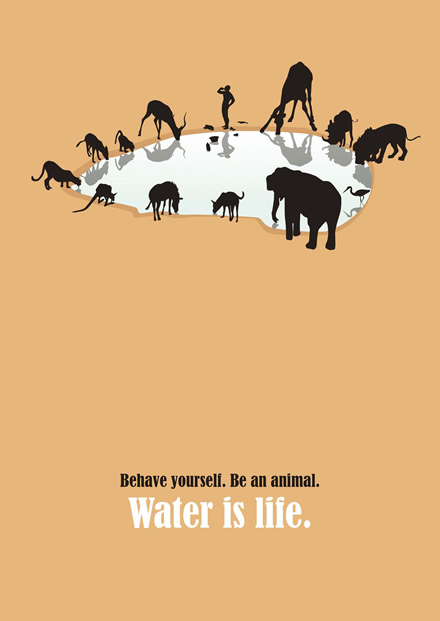
Photo: This poster appeared in our March 16, 2011 post and is being published again on popular demand. The poster, designed by Polish artist Pawel Dadok, shows a person, in peaceful coexistence with different wild animals, drinking from a water hole. The poster caption has the following challenge for the observer: “Behave yourself. Be an animal. Water is life.”
In December 2010 the United Nations General Assembly declared 2013 as the United Nations International Year of Water Cooperation. According to United Nations, “Water, a vital resource unlike any other knows no borders… As rapid urbanization, climate change and growing food needs put ever-increasing pressure on freshwater resources, the objective of the Year is to draw attention to the benefits of cooperation in water management… Cooperation is crucial not only to ensure the sustainable and equitable distribution of water but also to foster and maintain peaceful relations within and among communities.”
UNESCO has developed a series of entities focusing on water since it first began to address water-related issues in 1956. The International Hydrological Programme (IHP), created in 1975, was the first intergovernmental initiative on freshwater in the United Nations system. This programme relies on a network of 18 water-related centres and 29 UNESCO water-related chairs. UNESCO’s water family includes other entities such as the UNESCO-IHE Institute for Water Education in Delft (Netherlands), the largest post-graduate water education facility in the world.
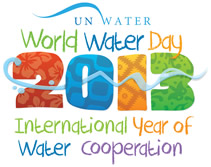
Key Messages for International Year of Water Cooperation 2013:
• Water cooperation is key to security, poverty eradication, and social equity.
• Water cooperation generates economic benefits.
• Water cooperation is crucial to preserve water resources and protect the environment.
• Water cooperation builds peace.
|GlobalGiants.Com|
Edited & Posted by the Editor | 1:23 AM | View the original post
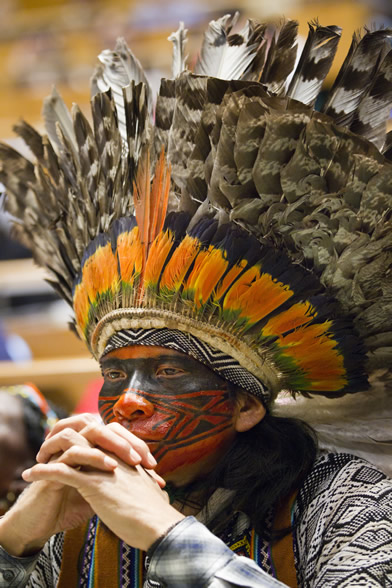
Photo: An indigenous delegate in the General Assembly Hall at the opening of the twelfth session of the UN Permanent Forum on Indigenous Issues. 20 May 2013. United Nations, New York. UN Photo/Rick Bajornas.
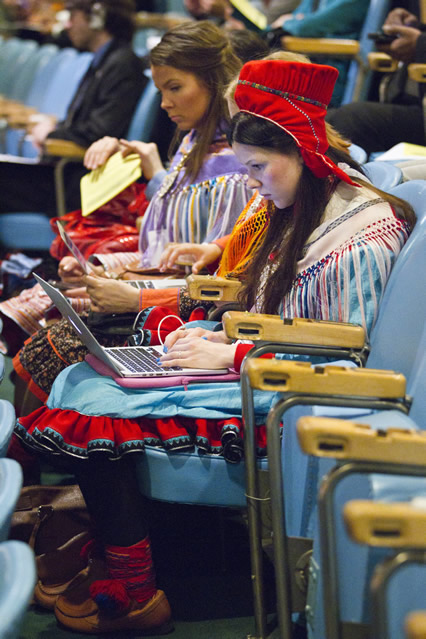
Photo: Indigenous delegates in the General Assembly Hall at the opening of the twelfth session of the UN Permanent Forum on Indigenous Issues. 20 May 2013. United Nations, New York. UN Photo/Rick Bajornas.
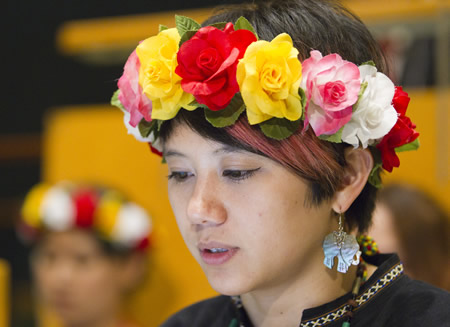
Photo: An indigenous delegate in the General Assembly Hall at the opening of the twelfth session of the UN Permanent Forum on Indigenous Issues. 20 May 2013. United Nations, New York. UN Photo/Rick Bajornas.
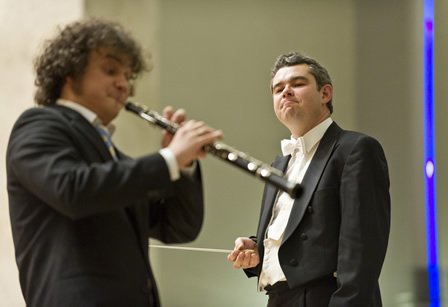
Photo: Inaugural concert of the UN Orchestra in the Assembly Hall of the United Nations Office at Geneva on 14th of December 2011. UN Photo/Fabrice Arlot.
• Diversity Day, officially known as “The World Day for Cultural Diversity for Dialogue and Development”, is an opportunity to help communities understand the value of cultural diversity and learn how to live together in harmony.
In 2001, UNESCO adopted the Universal Declaration on Cultural Diversity and in December 2002, the UN General Assembly declared May 21 to be the World Day for Cultural Diversity for Dialogue and Development.
The day provides an opportunity to deepen the understanding of the values of cultural diversity and to learn to live together better.
In 2011, a grassroots campaign ‘Do One Thing For Diversity and Inclusion’, celebrating the annual World Day for Cultural Diversity was launched by UNESCO and the UN Alliance of Civilizations.
The 2013 campaign, by encouraging people and organizations from around the world to take concrete action to support diversity, aims:
• To raise awareness worldwide about the importance of intercultural dialogue, diversity and inclusion.
• To build a world community of individuals committed to support diversity with real and every day-life gestures.
• To combat polarization and stereotypes to improve understanding and cooperation among people from different cultures.
According to UNESCO, “The day provides an opportunity for mobilization on the part of all actors (governments, policy makers, civil society organizations, communities, cultural professionals) to promote culture in its diversity and in all its forms: tangible and intangible heritage, creative industries, goods and services.”
|GlobalGiants.Com|
“No culture can live if it attempts to be exclusive.”
— Mahatma Gandhi.
Edited & Posted by the Editor | 5:08 AM | View the original post
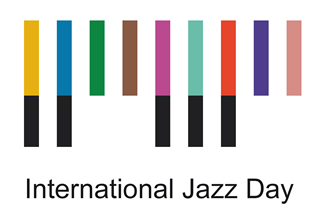
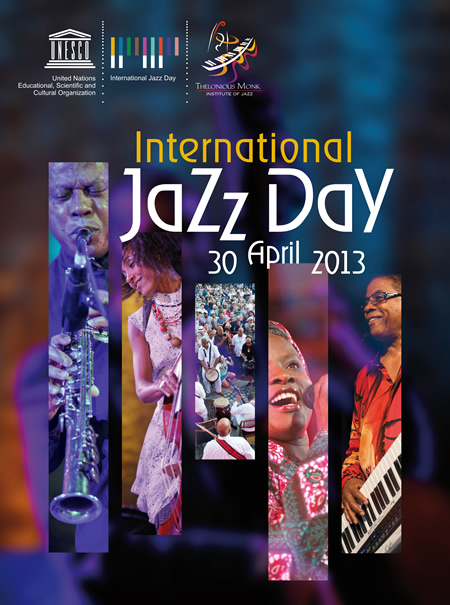
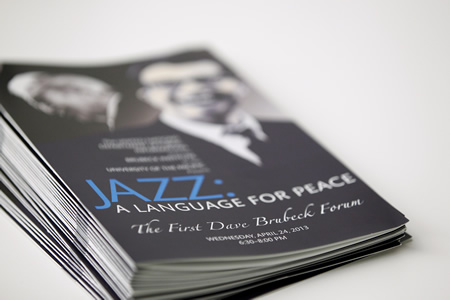
Photo: A concert on the theme, “Jazz: A Language for Peace”, featuring the Brubeck Institute Jazz Quintet, was held at UN Headquarters in connection with the International Jazz Day (30 April). Shown here: A stack of program notes for the performance. United Nations, New York. UN Photo/Rick Bajornas.

Photo: Jazz Appreciation Forever Stamp Honors America’s Gift to Music. Photo Credit: U.S. Postal Service.
• In an unprecedented series of events worldwide, UNESCO and the Thelonious Monk Institute of Jazz joined together to celebrate jazz as a universal language of freedom on April 30th. With events taking place in 196 countries, International Jazz Day 2013 culminated in an evening concert at Istanbul’s Hagia Irene that was viewed live by millions around the world. Dating back to the 4th century, the Hagia Irene, located in the outer courtyard of the Topkapi Palace - a UNESCO World Heritage Site - is regarded as an international treasure for music lovers because of its brilliant atmosphere and enchanting acoustics.
Those who participated in the Istanbul event included pianists Herbie Hancock, John Beasley (Musical Director), George Duke, Robert Glasper, Ramsey Lewis, Keiko Matsui and Eddie Palmieri; vocalists Ruben Blades, Al Jarreau, Milton Nascimento, Dianne Reeves, Esperanza Spalding (who also played bass) and Joss Stone; trumpeters Terence Blanchard, Hugh Masekela and Imer Demirer; bassists James Genus, Marcus Miller and Ben Williams; drummers Terri Lyne Carrington and Vinnie Colaiuta; guitarists Bilal Karaman, John McLaughlin, Lee Ritenour and Joe Louis Walker; saxophonists Dale Barlow, Igor Butman , Branford Marsalis, Wayne Shorter and Liu Yuan; clarinetists Anat Cohen and Husnu Senlendirici; violinist Jean-Luc Ponty; Pedrito Martinez on percussion; tabla master Zakir Hussain; trombonist Alevtina Polyakova; and special guest Martin Luther King III.
On this occasion, noted pianist Herbie Hancock remarked, “Using jazz as a tool, I have faith that the music - either through playing an instrument, learning about its rich cultural history, or listening to the millions of recordings made over the past century - will demonstrate that barriers can be broken, unity can be achieved, new forms of expression can be created, and a dialogue between cultures can begin. From my decades long career as a jazz musician, I know first hand that inventive ideas can achieve the impossible, transform humanity, and make productive changes at the grass roots level.”
International Jazz Day was adopted by UNESCO Member States on the initiative of UNESCO Goodwill Ambassador Herbie Hancock in order to encourage and highlight jazz’s unique power for advancing intercultural dialogue and understanding across the world.
International Jazz Day brings together communities, schools and groups from across the globe to celebrate jazz, learn about its roots and highlight its important role as a form of communication that transcends differences.
|GlobalGiants.Com|
Edited & Posted by the Editor | 4:26 AM | View the original post
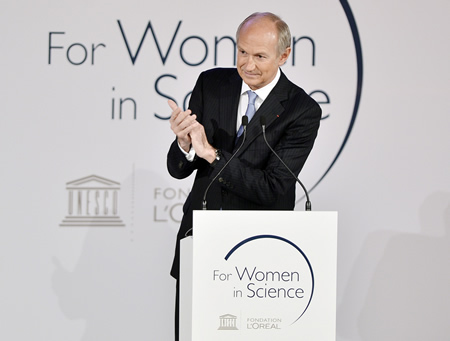
Photo: For Women in Science - La Sorbonne. Jean-Paul Agon, Chairman and CEO, L’Oréal, delivers opening remarks. © For Women in Science 2013.
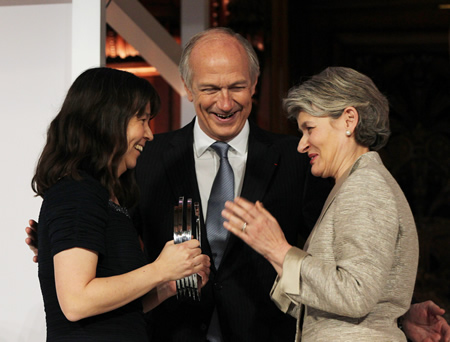
Photo: Professor Deborah S. Jin, University of Colorado, USA, L’ORÉAL-UNESCO Awards 2013 Laureate for North America “For having been the first to cool down molecules so much that she can observe chemical reactions in slow motion which may help further understanding of molecular processes which are important for medicine and new energy sources”. With Jean-Paul Agon, Chairman and CEO, L’Oréal, and Irina Bokova, Director General, UNESCO. © For Women in Science 2013.
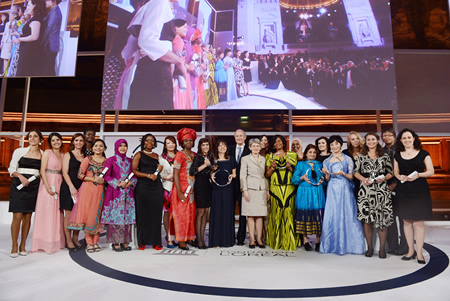
Photo: 2013 L’Oréal-UNESCO Awards ceremony. © For Women in Science 2013.
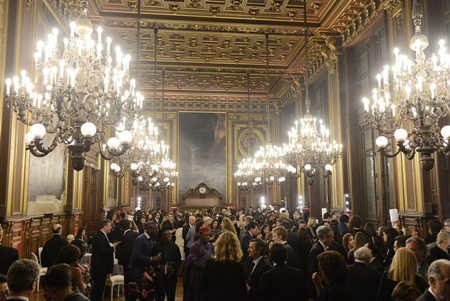
Photo: Grand Salon, La Sorbonne, Paris, France. 2013 L’Oréal-UNESCO Awards ceremony. © For Women in Science 2013.
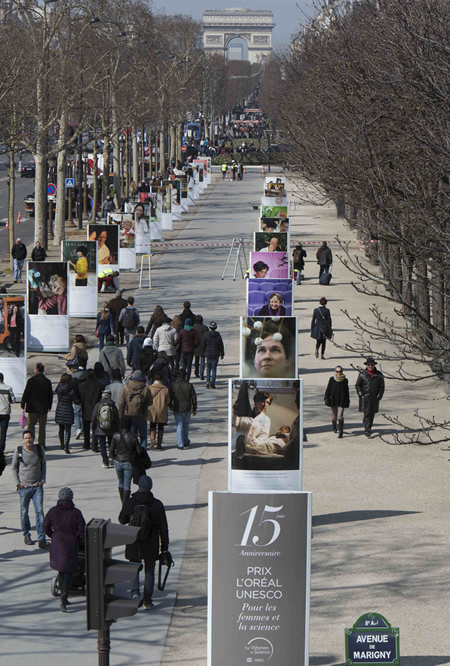
Photo: Photo Exhibition “Femmes de Science” - Avenue des Champs-Elysées, Paris. Photo Credit: Micheline Pelletie. © For Women in Science 2013.
• The L’OREAL-UNESCO For Women in Science program awarded five exceptional women scientists from around the world with the 2013 L’OREAL-UNESCO Awards in the Physical Sciences. The award ceremony took place on March 28 at Sorbonne University in Paris, France.
Since its inception, L’OREAL-UNESCO For Women in Science has honored 77 Laureates, including two who subsequently were awarded the Nobel Prize. The program has also supported more than 1,652 Fellows who have made contributions in every field of scientific research. By the end of 2013, a total of 1,729 women scientists from over 100 countries will have benefited from the program.
An international network of nearly 1,000 scientists nominates the candidates for each year’s Awards. The five Laureates are then selected by an independent, international jury. Each Laureate receives $100,000 in recognition of her contribution to the advancement of science.
Irina Bokova, Director General of UNESCO remarked, “This program embodies UNESCO’s founding principles. It is based on the idea that science has no gender and no frontiers; that scientific knowledge must be shared; that the curiosity of all girls and boys must be nurtured and encouraged as much as possible for the benefit of all.”
The five Laureates recognized for their scientific achievements are:
NORTH AMERICA
Professor Deborah S. Jin, University of Colorado (USA)
AFRICA and ARAB STATES
Professor Francisca Nneka OKEKE, University of Nigeria, Nsukka (Nigeria)
ASIA / PACIFIC
Professor Reiko Kuroda, Tokyo University of Science (Japan)
EUROPE
Professor Pratibha Gai, University of York (United Kingdom)
SOUTH AMERICA
Professor Marcia Barbosa, Federak University if Rio Grande do Sul, Porto Alegre (Brazil)
The 2013 L’OREAL-UNESCO Awards Jury is made up of 13 eminent members of the international scientific community. The President of the jury is Professor Ahmed Zewail, Nobel Prize in Chemistry 1999. Professor Christian de Duve, Nobel Prize in Medicine 1974, is the Founding President of the Awards, while Irina Bokova, Director General of UNESCO, is Honorary President.
|GlobalGiants.Com|
Edited & Posted by the Editor | 3:27 AM | View the original post
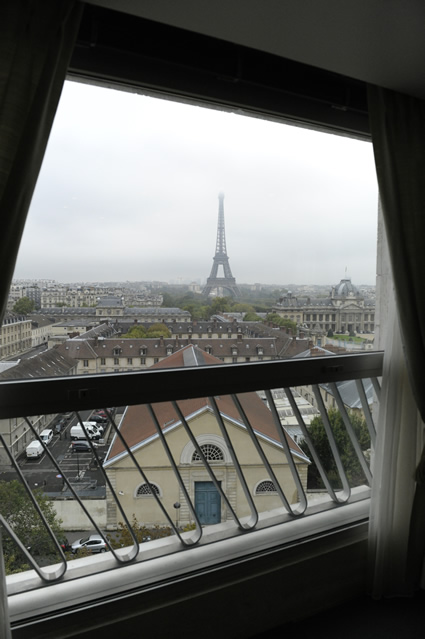
Photo: View of Paris from UNESCO Headquarters — A view of Paris and the Eiffel Tower from the Salon Lowendael at the headquarters of the UN Educational, Scientific and Cultural Organization (UNESCO), as a lunch is hosted in honor of UN Secretary-General Ban Ki-moon. 09 October 2012. Paris, France. UN Photo/Evan Schneider.
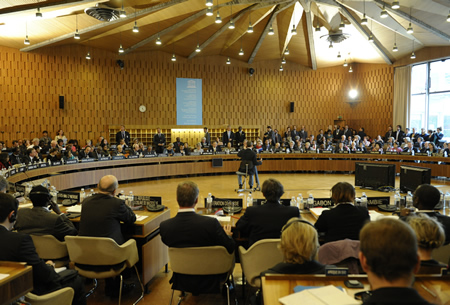
Photo: UN Secretary-General Attends UNESCO Executive Board Meeting — A wide view of the Executive Board meeting of the UN Educational, Scientific and Cultural Organization (UNESCO) attended by UN Secretary-General Ban Ki-moon, in Paris, France. 09 October 2012. Paris, France. UN Photo/Evan Schneider.
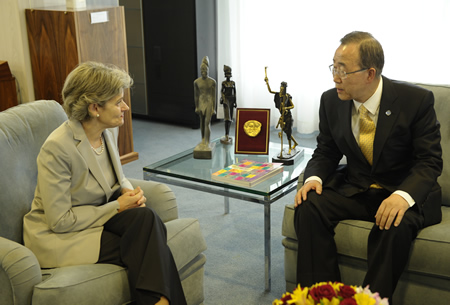
Photo: UN Secretary-General Meets UNESCO Chief in Paris — UN Secretary-General Ban Ki-moon (right) meets with Irina Bokova, Director-General of the UN Educational, Scientific and Cultural Organization (UNESCO), at UNESCO’s headquarters in Paris, France. 09 October 2012. Paris, France. UN Photo/Evan Schneider.
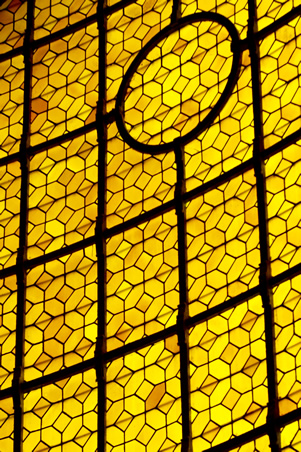
Photo: UN Secretary-General Visits Eglise du Dôme in Paris — UN Secretary-General Ban Ki-moon visited the Eglise du dôme at the Hôtel national des Invalides in Paris. Stained glass window at the Eglise du dôme. 09 October 2012. Paris, France. UN Photo/Evan Schneider.
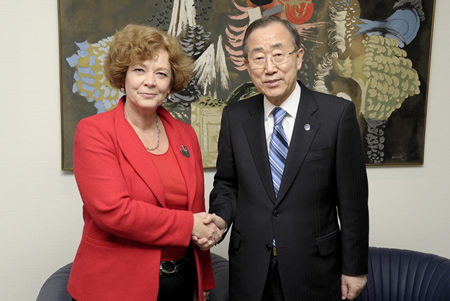
Photo: UN Secretary-General Meets Community of Democracies Secretary General — UN Secretary-General Ban Ki-moon (right) meets with Maria Leissner, Secretary General of the Community of Democracies, in Strasbourg, France. 08 October 2012. Strasbourg, France. UN Photo/Evan Schneider.
|GlobalGiants.Com|
Edited & Posted by the Editor | 8:18 AM | View the original post
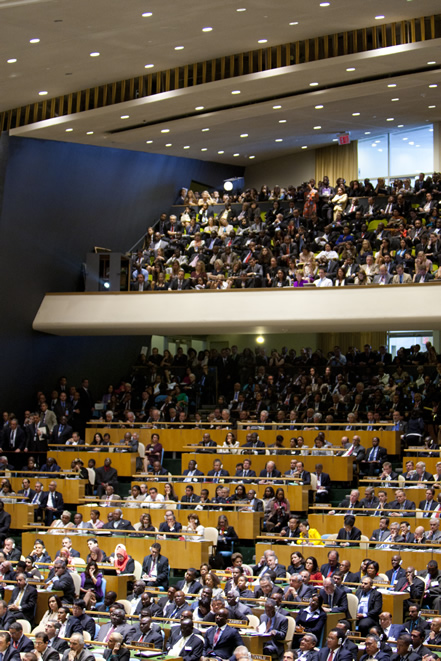
Photo: View of a cross-section of the General Assembly Hall during the opening of general debate of the Assembly’s sixty-seventh session. 25 September 2012. United Nations, New York. UN Photo/JC McIlwaine.
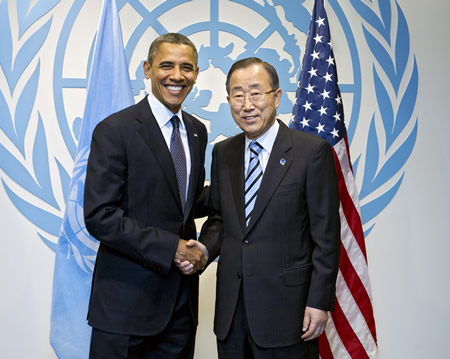
Photo: Secretary-General Ban Ki-moon meets with Barack Obama, President of the United States. 25 September 2012. United Nations, New York. UN Photo/Mark Garten.
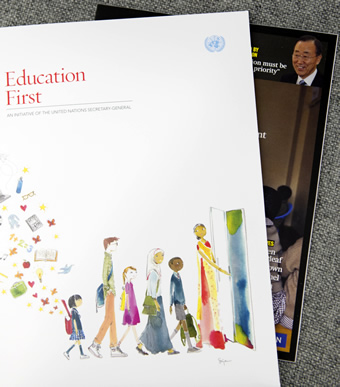
Photo: “Education First”, Secretary-General Ban Ki-moon’s Global Initiative on Education, which seeks to make a breakthrough to mobilize all partners to achieve universal primary education ahead of the 2015 target date for the Millennium Development Goals (MDGs), was launched on the margins of the UN General Assembly’s general debate. 26 September 2012. United Nations, New York. UN Photo/Mark Garten.
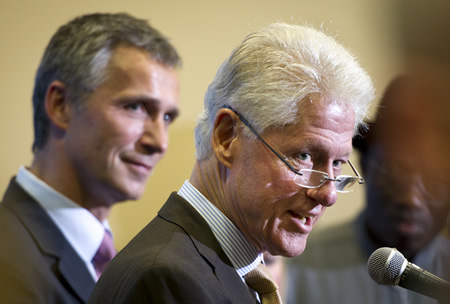
Photo: Bill Clinton, Founder of the William J. Clinton Foundation and former President of the United States, speaks at the launch of the Global Initiative on Education, “Education First”. The Initiative seeks to make a breakthrough to mobilize all partners to achieve universal primary education ahead of the 2015 target date for the Millennium Development Goals (MDGs). 26 September 2012. United Nations, New York. UN Photo/Mark Garten.
|GlobalGiants.Com|
“Educating the mind without educating the heart is no education at all.”
— Aristotle.
Edited & Posted by the Editor | 1:37 PM | View the original post
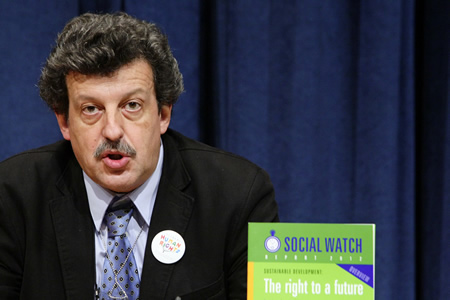
Photo: Roberto Bissio, Coordinator of Social Watch, briefs on “Civil Society and Global Financial Regulation - The Role of the United Nations”, and his organization’s publication, “Social Watch Report 2012 - THE RIGHT TO A FUTURE”. December 9, 2011. United Nations, New York. UN Photo/JC McIlwaine.
|GlobalGiants.Com|
Edited & Posted by the Editor | 1:32 AM | View the original post
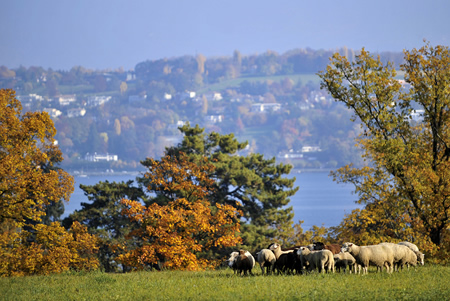
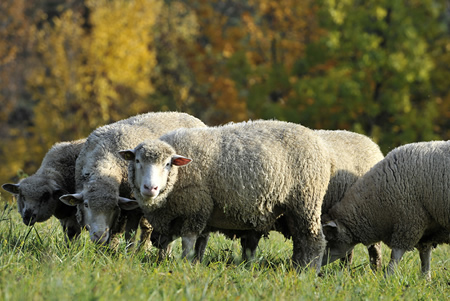
Photos: Sheep graze on the lawn of the Palais des Nations, the United Nations Regional Headquarters in Geneva, Switzerland, as part of an environmentally-friendly tradition held every year in October and November. The sheep’s grazing allows for the lawn to be naturally cut and for other organic maintenance work to be done. UN Photo / Jean-Marc Ferre.
|GlobalGiants.Com|
Edited & Posted by the Editor | 12:21 PM | View the original post
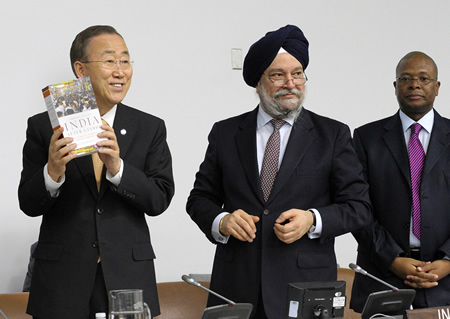
Photo: UN Secretary-General Ban Ki-moon receives a copy of “India After Gandhi: The History of the World’s Largest Democracy” by Ramachandra Guha, at a special event organized by the Permanent Mission of India to the UN commemorating the International Day of Non-Violence on the theme “Non-Violence as an Instrument of Social Change”. Mr. Guha was among the speakers at the event. Pictured with Mr. Ban are Hardeep Singh Puri, Permanent Representative of India to the UN and Baso Sangqu, Permanent Representative of South Africa to the UN. The day is celebrated annually on October 2, the birthday of non-violence pioneer Mahatma Gandhi. United Nations, New York. UN Photo/Evan Schneider.
|GlobalGiants.Com|
Edited & Posted by the Editor | 10:56 AM | View the original post
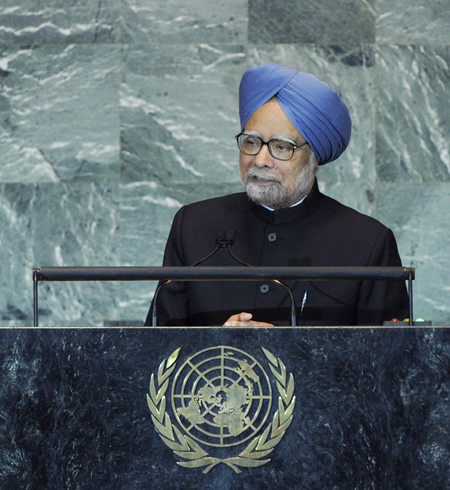
Photo: Dr. Manmohan Singh, Prime Minister of the Republic of India, addresses the general debate of the sixty-sixth session of the UN General Assembly. September 24, 2011. United Nations, New York. UN Photo/Evan Schneider.
“The world economy is in trouble,” Dr. Singh, an economist, told the General Assembly. “The shoots of recovery which were visible after the economic and financial crisis of 2008 have yet to blossom. In many respects the crisis has deepened even further.”
“The traditional engines of the global economy - countries such as the United States, Europe and Japan, which are also the sources of global economic and financial stability, are today faced with continued economic slowdown. Recessionary trends in these countries are affecting confidence in world financial and capital markets,” he told the gathering.
|GlobalGiants.Com|
Edited & Posted by the Editor | 2:34 PM | View the original post
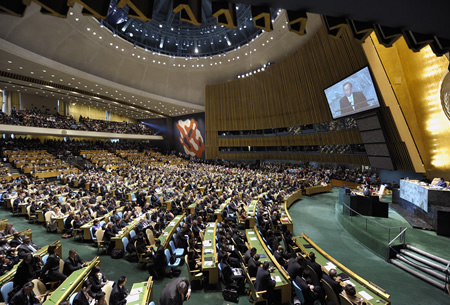
Photo: A wide view of the General Assembly Hall as Secretary-General Ban Ki-moon presents his annual report, at the opening of the general debate of the Assembly’s sixty-sixth session. September 21, 2011. United Nations, New York. UN Photo/Mark Garten.
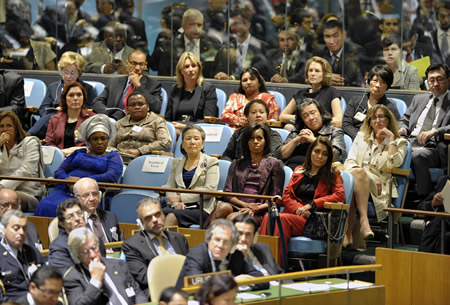
Photo: A view of the dignitaries’ gallery at the opening of the general debate of the sixty-sixth session of the General Assembly.
Front row, right to left: Muna Ghassan Tamim Rihani, wife of Nassir Abdulaziz Al-Nasser, President of the sixty-sixth session of the General Assembly; Michelle Obama, First Lady of the United States of America; and Yoo Soon-taek, wife of UN Secretary-General Ban Ki-moon. September 21, 2011. United Nations, New York. UN Photo/Mark Garten.
|GlobalGiants.Com|
Edited & Posted by the Editor | 1:08 PM | View the original post
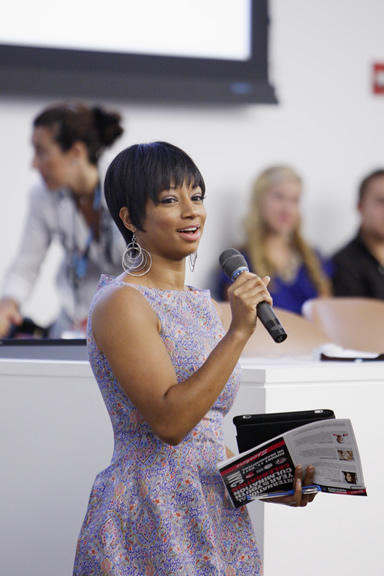
Photo: Monique Coleman, UN Youth Champion for the International Year of Youth, co-hosts the Year’s “Culmination Celebration” with a focus on the role girls and young women play in advancing dialogue and mutual understanding. August 11, 2011. United Nations, New York. UN Photo/Rick Bajornas.

Photo: A view of audience members during the UN Year of Youth “Culmination Celebration” focusing on the role girls and young women play in advancing dialogue and mutual understanding. August 11, 2011. United Nations, New York. UN Photo/Rick Bajornas.
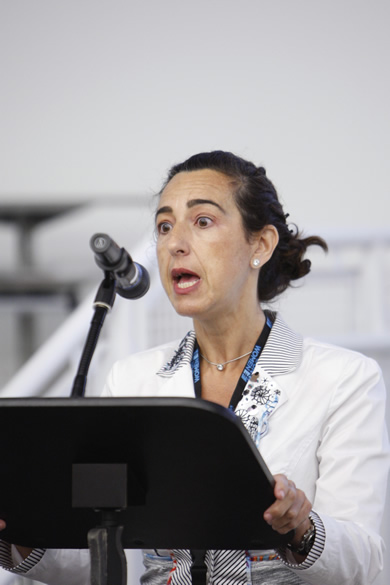
Photo: Begona Lasagabaster, UN Women Advisor on Political Participation, speaks at the UN Year of Youth “Culmination Celebration”, an event focusing on the role of girls and young women in advancing dialogue and mutual understanding. August 11, 2011. United Nations, New York. UN Photo/Rick Bajornas.
|GlobalGiants.Com|
Edited & Posted by the Editor | 4:36 AM | View the original post
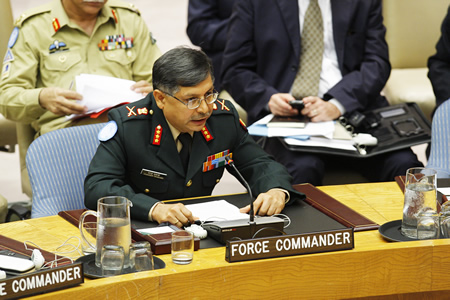
Photo: Lieutenant General Chander Prakash, Force Commander of the United Nations Organization Stabilization Mission in the Democratic Republic of Congo (MONUSCO), addresses the Security Council. July 27, 2011. United Nations, New York. UN Photo/Devra Berkowitz.
|GlobalGiants.Com|
Edited & Posted by the Editor | 3:57 AM | View the original post
A meeting of the High-level Segment of the United Nations Economic and Social Council (ECOSOC), with focus on education, took place in Geneva.
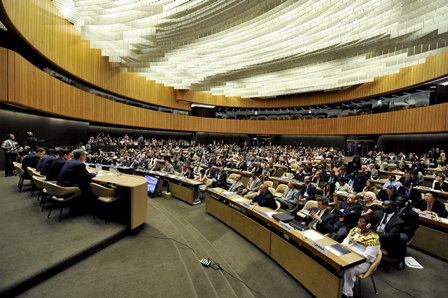
Photo: Participants at the ECOSOC High-Level Segment. UN Photo / Jean-Marc Ferre.
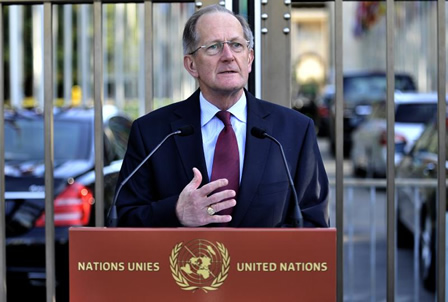
Photo: Joseph Deiss, President of the General Assembly, delivers his statement during the meeting of senior United Nations officials with local Pupils in the context of the 2011 ECOSOC High-Level Segment. UN Photo / Jean-Marc Ferre.
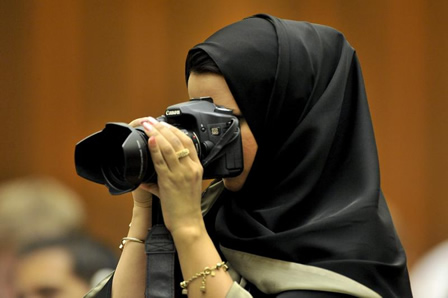
Photo: A member of delegation of Qatar at the ECOSOC High-Level Segment. UN Photo / Jean-Marc Ferre.
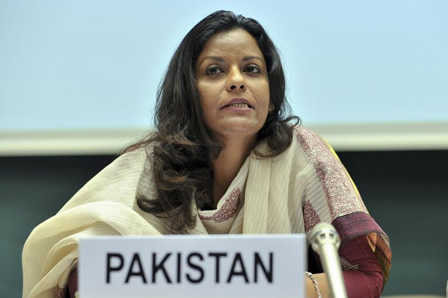
Photo: Nafisa Shah, Member of the National Assembly of Pakistan, addresses the ECOSOC High-Level Segment. UN Photo / Jean-Marc Ferre.
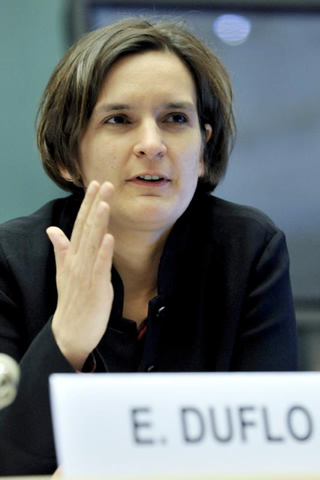
Photo: Esther Duflo, Professor or Poverty Alleviation and Development, Massachussetts Institute of Technology, during the ECOSOC High-Level Segment. UN Photo / Jean-Marc Ferre.
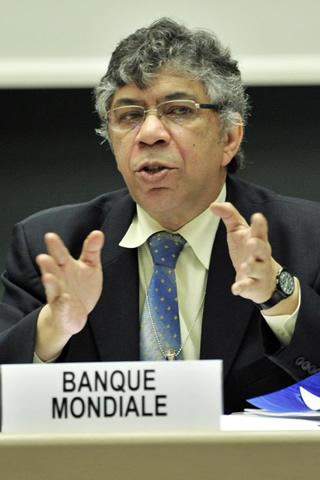
Photo: Otaviano Canuto dos Santos Fihlo, Vice-President, Poverty Reduction and Economic Management, World Bank, during the ECOSOC High-Level Segment. UN Photo / Jean-Marc Ferre.
ECOSOC was established under the United Nations Charter as the principal organ to coordinate economic, social, and related work of the 14 UN specialized agencies, functional commissions and five regional commissions. The Council also receives reports from 11 UN funds and programmes.
• The Economic and Social Council (ECOSOC) serves as the central forum for discussing international economic and social issues, and for formulating policy recommendations addressed to Member States and the United Nations system.
ECOSOC is responsible for:
• Promoting higher standards of living, full employment, and economic and social progress;
• Identifying solutions to international economic, social and health problems;
• Facilitating international cultural and educational cooperation; and
• Encouraging universal respect for human rights and fundamental freedoms.
It has the power to make or initiate studies and reports on these issues. It also has the power to assist the preparations and organization of major international conferences in the economic and social and related fields and to facilitate a coordinated follow-up to these conferences. With its broad mandate the Council’s purview extends to over 70 per cent of the human and financial resources of the entire UN system.
|GlobalGiants.Com|
Mobius Says Another Financial Crisis ‘Around The Corner’
May 30, 2011 — Mark Mobius, executive chairman of Templeton Asset Management’s emerging markets group, said another financial crisis is inevitable because the causes of the previous one haven’t been resolved.
“There is definitely going to be another financial crisis around the corner because we haven’t solved any of the things that caused the previous crisis,” Mobius said at the Foreign Correspondents’ Club of Japan in Tokyo today in response to a question about price swings. “Are the derivatives regulated? No. Are you still getting growth in derivatives? Yes.”
The total value of derivatives in the world exceeds total global gross domestic product by a factor of 10, said Mobius, who oversees more than $50 billion. With that volume of bets in different directions, volatility and equity market crises will occur, he said.
The global financial crisis three years ago was caused in part by the proliferation of derivative products tied to U.S. home loans that ceased performing, triggering hundreds of billions of dollars in write-downs and leading to the collapse of Lehman Brothers Holdings Inc. in September 2008.
The freezing of global credit markets caused governments from Washington to Beijing to London to pump more than $3 trillion into the financial system to shore up the global economy.
— BLOOMBERG.COM

Edited & Posted by the Editor | 12:06 PM | View the original post
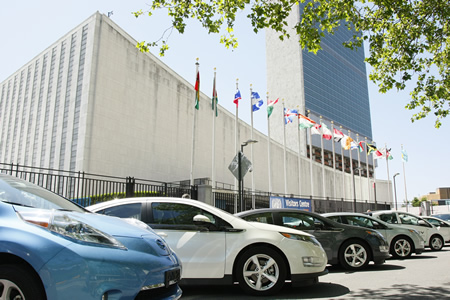
Photo: Electric cars are parked at United Nations Headquarters in a campaign to work towards supplying sustainable electricity to billions of people. The UN General Assembly is discussing: “Green Economy: A Pathway to Sustainable Development”. June 2, 2011. United Nations, New York. UN Photo/JC McIlwaine.

Photo: Participants of the Global Summit to Strengthen Public-Private Partnerships to Accelerate Global Electricity Technology Deployment arrive at United Nations Headquarters by electric cars, in a campaign to work towards supplying sustainable electricity to billions of people. The side event is held as the UN General Assembly debates on: “Green Economy: A Pathway to Sustainable Development”. June 2, 2011. United Nations, New York. UN Photo/JC McIlwaine.
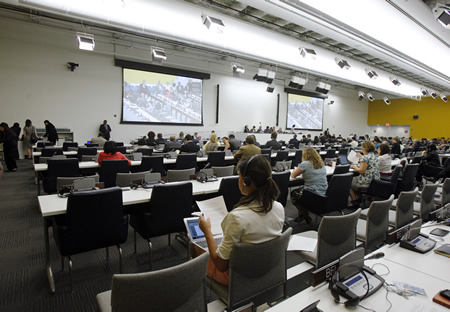
Photo: A wide view of the General Assembly thematic debate on: “Green Economy: A Pathway to Sustainable Development”. June 2, 2011. United Nations, New York. UN Photo/Devra Berkowitz.
|GlobalGiants.Com|
Edited & Posted by the Editor | 6:16 AM | View the original post
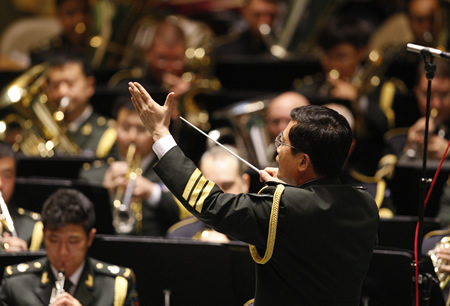
Photo: Senior Colonel Yu Hai conducts the Military Band of the People’s Liberation Army of China during a joint concert with the United States Army Band “Pershing’s Own” at UN Headquarters. The concert is part of the ensembles’ three-city tour based on friendship and cooperation through music, and will conclude on May 21 at Avery Fisher Hall, Lincoln Center. May 20, 2011. United Nations, New York. UN Photo/Paulo Filgueiras.
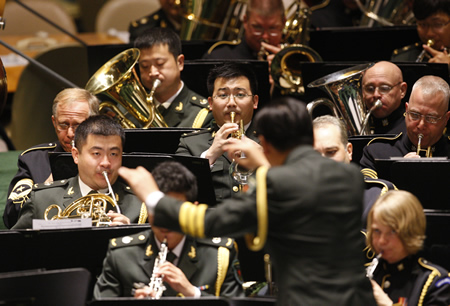
Photo: A close-up of performers of the Military Band of the People’s Liberation Army of China during their first-ever joint concert with the United States Army Band “Pershing’s Own” at UN Headquarters. The concert is part of the ensembles’ three-city tour based on friendship and cooperation through music, and will conclude on May 21 at Avery Fisher Hall, Lincoln Center. May 20, 2011. United Nations, New York. UN Photo/Paulo Filgueiras.
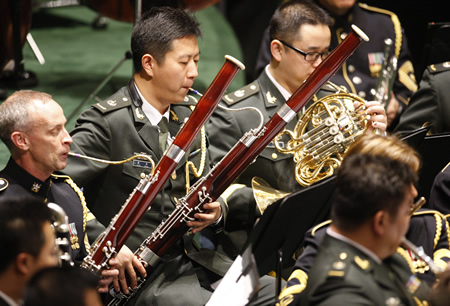
Photo: A close-up of performers of the Military Band of the People’s Liberation Army of China and the United States Army Band “Pershing’s Own” during their first-ever joint concert at UN Headquarters. The concert is part of the ensembles’ three-city tour based on friendship and cooperation through music, and will conclude on May 21 at Avery Fisher Hall, Lincoln Center. May 20, 2011. United Nations, New York. UN Photo/Paulo Filgueiras.
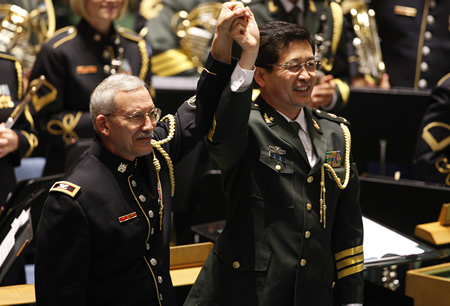
Photo: Colonel Thomas Rotondi, Jr. (left), Leader and Commander of the United States Army Band “Pershing’s Own”, and Senior Colonel Yu Hai, Chief of the Military Band of the People’s Liberation Army of China, thank the audience after their first-ever joint concert at UN Headquarters. The concert is part of the ensembles’ three-city tour based on friendship and cooperation through music, and will conclude on May 21 at Avery Fisher Hall, Lincoln Center. May 20, 2011. United Nations, New York. UN Photo/Paulo Filgueiras.
|GlobalGiants.Com|
Edited & Posted by the Editor | 4:11 AM | View the original post
 |
 |
